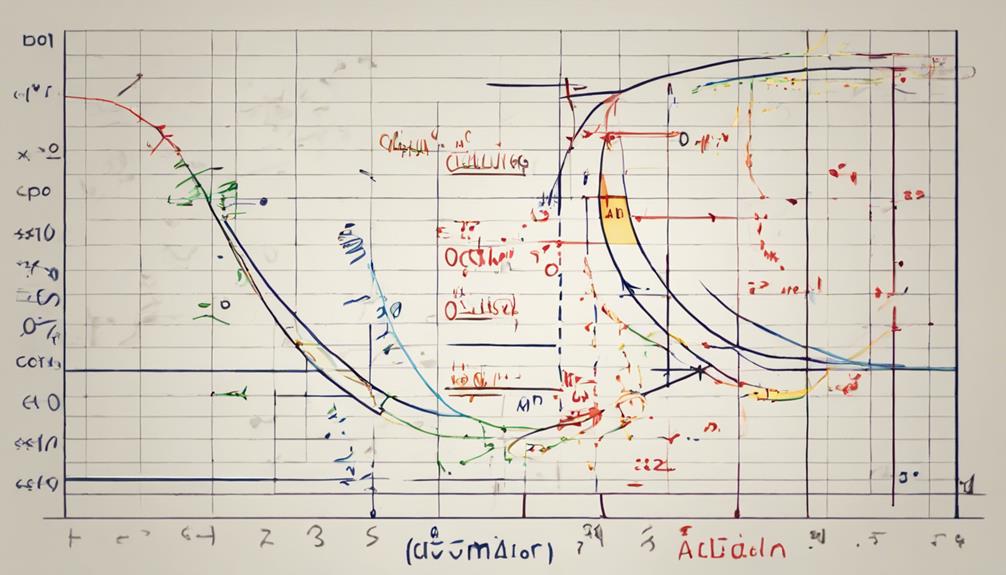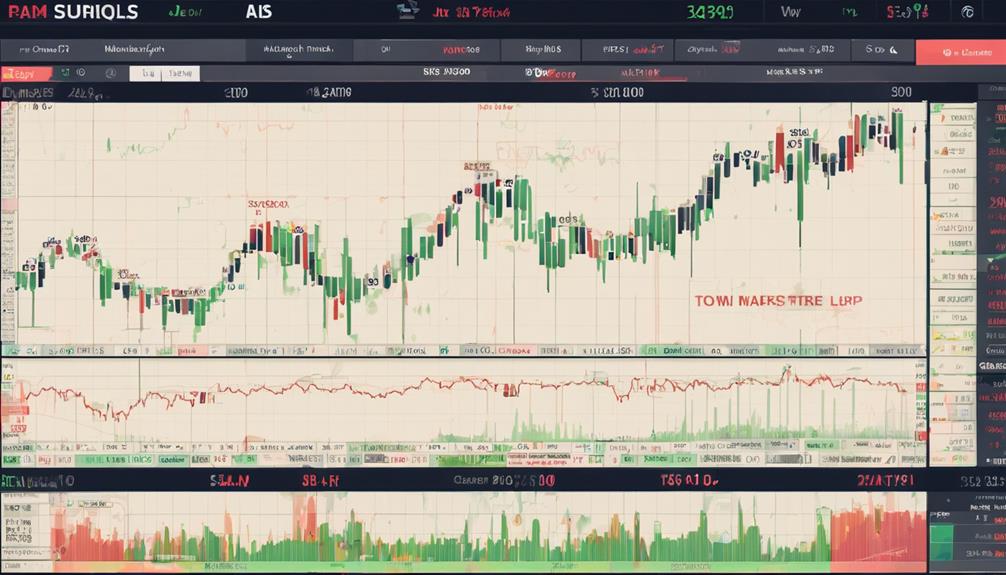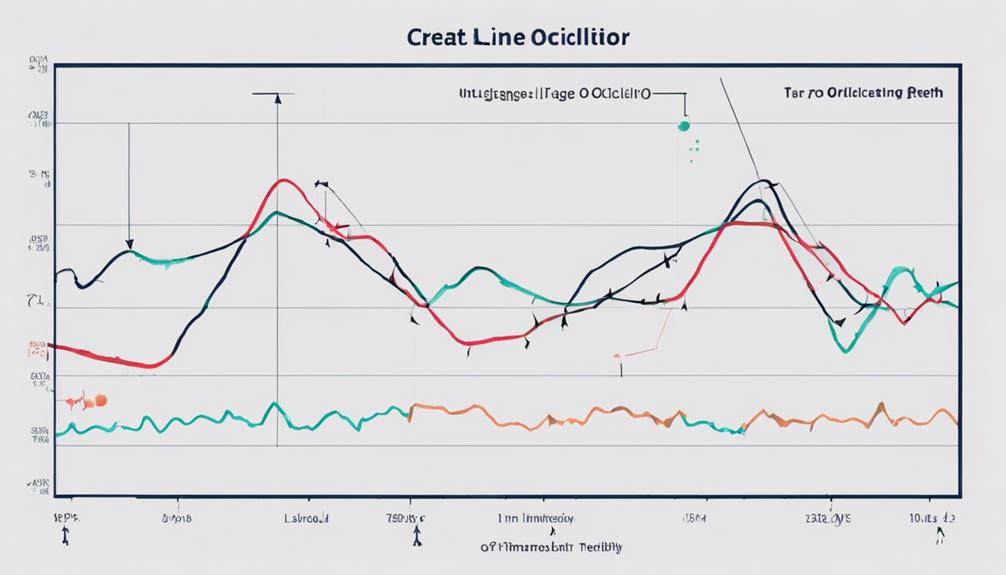The Ultimate Oscillator stands out as a reputable investment tool for discerning traders seeking a nuanced understanding of market trends. Its unique blend of three distinct time periods offers a comprehensive analysis of short, medium, and long-term movements, providing a holistic perspective on market dynamics.
By effectively pinpointing trend strength, reversals, and key divergences, this oscillator equips investors with valuable insights for strategic decision-making. However, what truly sets the Ultimate Oscillator apart lies in its ability to complement and enhance other technical indicators, offering a deeper layer of analysis that can potentially unlock profitable opportunities in the market.
Ultimate Oscillator Overview
Developed by Larry Williams in 1976, the Ultimate Oscillator is a powerful technical tool that analyzes momentum by integrating three different time periods – 7, 14, and 28 – to provide a comprehensive view of short, medium, and long-term trends.
This oscillator, which ranges from 0 to 100, is particularly beneficial due to its emphasis on the short-term period, offering insights into trend strength and possible reversals. Traders rely on the Ultimate Oscillator to pinpoint overbought and oversold conditions and to identify bullish and bearish divergences, enhancing their decision-making process.
By incorporating multiple timeframes and weighted averages, this tool improves the accuracy of investment decisions and generates valuable buy and sell signals. Understanding the Ultimate Oscillator strategy is essential for investors seeking to optimize their trading activities and capitalize on price movements efficiently.
Principles of Ultimate Oscillator

Analyzing price momentum across varying timeframes, the Ultimate Oscillator offers traders a comprehensive view of market trends and potential reversals. By incorporating three different timeframes (7, 14, and 28 periods), this technical analysis indicator captures short, medium, and long-term price movements.
Traders utilize the Ultimate Oscillator as a tool for identifying overbought and oversold conditions, crucial for making informed trading decisions. In this context, overbought conditions typically occur when the oscillator exceeds 70, signaling a potential reversal to the downside, while oversold conditions, below 30, suggest a possible upward reversal.
Additionally, traders look for bullish and bearish divergences between price action and the oscillator to anticipate shifts in momentum. The Ultimate Oscillator's emphasis on recent prices through weighted calculations helps filter out noise and provide clearer signals, aiding traders in assessing trend strength and potential turning points in the market.
Calculation of the Ultimate Oscillator

The Ultimate Oscillator's calculation process involves determining buying pressure (BP) and true range (TR) values over distinct 7, 14, and 28-day periods. By computing weighted averages of BP and TR, the Ultimate Oscillator (UO) value is derived. This value ranges between 0 and 100, with 70 indicating overbought conditions and 30 signaling oversold conditions.
The UO's multi-timeframe analysis offers a comprehensive insight into market momentum, trend strength, potential price reversals, and divergence accurately. Traders rely on the UO to identify shifts in momentum that could lead to price reversals and to confirm existing trends.
Moreover, the UO's ability to indicate overbought or oversold conditions assists traders in making informed decisions about market entry or exit points. Understanding the calculation of the Ultimate Oscillator is crucial for utilizing this tool effectively in investment strategies.
Practical Application of Ultimate Oscillator

Utilizing the Ultimate Oscillator in real-world trading scenarios enhances investors' ability to gauge market momentum shifts and identify optimal entry and exit points based on reliable multi-timeframe analysis. By combining three different timeframes (7, 14, and 28), the Ultimate Oscillator offers a comprehensive view of short, medium, and long-term trends, making it a valuable tool for traders seeking to capitalize on price movements.
Traders use this technical indicator to spot potential trend reversals and confirm price action through divergences, especially in overbought and oversold conditions. The Ultimate Oscillator's multi-timeframe approach increases its reliability in determining trend strength and identifying entry/exit points accurately. When integrated with other technical indicators, the Ultimate Oscillator can significantly enhance trading strategies, providing traders with a more comprehensive and nuanced understanding of market dynamics.
Strengths and Limitations of Ultimate Oscillator

In assessing the Ultimate Oscillator, it is essential to recognize both its strengths and limitations to make informed decisions in utilizing this investment tool effectively.
Strengths and Limitations of Ultimate Oscillator:
- Multi-Timeframe Approach: The Ultimate Oscillator's use of three different timeframes (7, 14, and 28 periods) provides a comprehensive view of market trends, enabling early identification of reversals and potential price movements.
- Reduction of False Signals: By incorporating multiple timeframes, the Ultimate Oscillator effectively diminishes false divergence signals, enhancing its accuracy in pinpointing potential price reversals and market shifts.
- Enhanced Trading Decisions: While offering valuable insights into market trends, the Ultimate Oscillator can be intricate for novice traders, especially in highly volatile or strongly trending markets. However, when combined with other indicators in a trading strategy, it can significantly enhance overall trading decisions by providing a more holistic view of market dynamics.
How Can the Ultimate Oscillator Help in Making Investment Decisions?
The ultimate oscillator is a powerful tool for tracking market trends and making sound investment decisions. By analyzing three different time frames, it provides a more comprehensive view of market conditions, helping investors identify overbought and oversold levels. This can guide smarter trading strategies and improve overall portfolio performance.
Frequently Asked Questions
What Is the Difference Between MACD and Ultimate Oscillator?
The Ultimate Oscillator and MACD differ in their approach to momentum analysis. While Ultimate Oscillator relies on multiple time frames and overbought/oversold levels, MACD focuses on the interaction between moving averages and includes a signal line for trend crossovers.
What Does Oscillator Mean in Investment Management?
An oscillator in investment management serves as a technical indicator that oscillates around a centerline to signify buying or selling opportunities. These tools gauge momentum, aiding traders in identifying market conditions for strategic decision-making.
Is Awesome Oscillator a Good Indicator?
The Awesome Oscillator is a valuable indicator in assessing market momentum through moving averages. It aids traders in identifying buy/sell signals, confirming trends, and spotting reversals. Traders appreciate its simplicity and clarity for decision-making in trading strategies.
What Is the Most Accurate Oscillator?
Among various oscillators, the Relative Strength Index (RSI) is widely regarded as one of the most accurate. It measures the speed and change of price movements, offering valuable insights into overbought and oversold conditions.
Conclusion
In conclusion, the Ultimate Oscillator stands out as a reliable investment tool due to its multi-timeframe analysis, ability to identify divergences and overbought/oversold conditions, and potential for enhancing trading strategies when combined with other technical indicators. Its comprehensive approach to market dynamics makes it a valuable asset for traders seeking to make informed investment decisions.
But, can the Ultimate Oscillator truly predict market movements with complete accuracy?
